CarEdge saved me over 4,500 dollars on a brand new Honda Pilot. I can't say thank you enough.
Price intelligence
Find a wide range of vehicle listings with market insights on new and used listings near you.
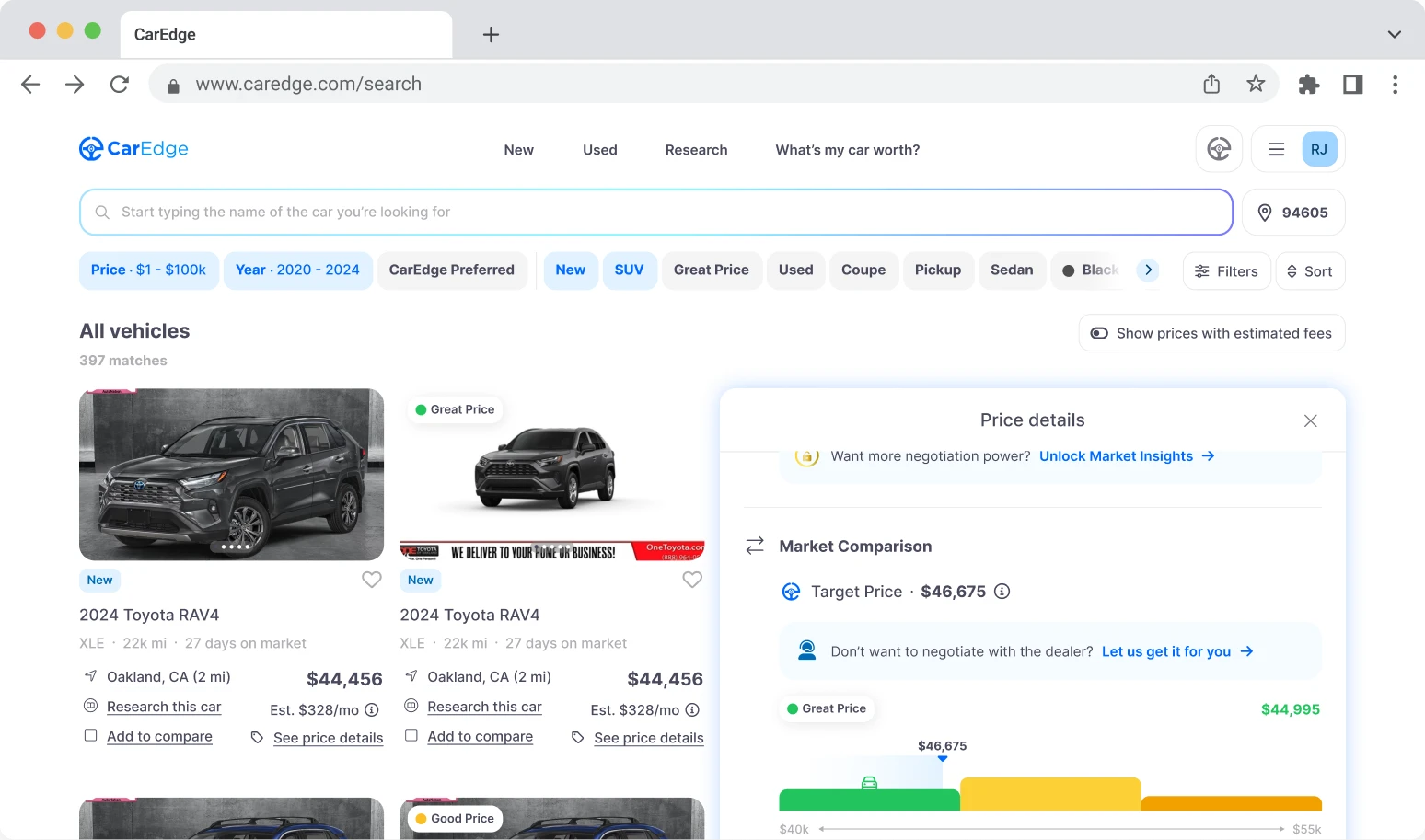

Help us personalize your CarEdge experience — it only takes a second.
Your answers help us personalize your CarEdge journey — we’ll follow up with tips and next steps that match your buying timeline.


Self-driving technology has been heralded as a game-changing innovation that will transform our daily lives. However, the reality of this technology is far from certain. While autonomous vehicles offer potential benefits such as improved safety, reduced traffic congestion, and increased efficiency, there are still many challenges that must be addressed before this technology can be fully realized. The top 5 self-driving car companies are closer than ever before to overcoming the hurdles of self-driving. Let’s take a look at who the key players are, their unique approaches to remaining challenges, and the frontier of innovation today.

Tesla is known for its electric cars, but the company has also been working on autonomous driving technology for several years. Tesla’s Autopilot system allows cars to handle some driving tasks on their own, but the company’s ultimate goal is to create fully autonomous vehicles.
The Tesla approach to self-driving has been controversial due to allegations of overpromising and under delivering. Still, the company has made significant progress in this area in recent years. Here are some of the key innovations that Tesla has introduced in the field of self-driving technology:
Autopilot: Tesla’s Autopilot system is one of the most advanced self-driving systems on the market today. The system uses a combination of cameras, radar, and ultrasonic sensors to detect and respond to obstacles on the road. It can handle many driving tasks, such as steering, accelerating, and braking, and it can even change lanes and park the car in certain situations.
Full Self-Driving (FSD): Tesla’s FSD system is designed to be even more advanced than Autopilot. While Autopilot is designed to handle many driving tasks, it still requires human supervision. FSD, on the other hand, is intended to allow the car to drive itself completely without any human input.
Neural Networks: Tesla’s self-driving technology is powered by neural networks, which are a type of machine learning algorithm. These neural networks are trained on massive amounts of data from Tesla’s fleet of vehicles, which allows them to recognize and respond to a wide range of driving scenarios.
Vision-Only Approach: Tesla’s self-driving technology is unique in that it relies primarily on cameras for sensing the environment, rather than lidar sensors which are commonly used by other companies. Tesla’s approach is based on the idea that cameras are a more cost-effective and scalable solution than lidar, and the company has made significant progress in developing advanced computer vision algorithms that can interpret camera data.
Over-the-Air Updates: One of the key advantages of Tesla’s self-driving technology is that it can be updated remotely over the air. This means that Tesla can push new features and improvements to its vehicles without the need for customers to bring their cars to a service center.
Overall, Tesla has made significant innovations in the field of self-driving technology, and the company’s Autopilot and FSD systems are some of the most advanced on the market today.

Cruise is a subsidiary of General Motors that is focused on developing self-driving cars. The company has been testing autonomous vehicles on public roads in San Francisco since 2015, and in 2020, Cruise unveiled its first completely driverless car. Since then, Cruise has also established partnerships with Honda and Microsoft.
In 2020, Cruise received a permit from the California Department of Motor Vehicles (DMV) to test its self-driving cars without a human safety driver behind the wheel. This made Cruise the first company to receive such a permit in California.
Cruise plans to launch a commercial autonomous ride-hailing service using its self-driving cars. The company has not announced a specific timeline for the launch of this service, but it has said that it plans to start with a limited pilot program in San Francisco.
Cruise’s self-driving technology is based on a combination of machine learning, computer vision, and sensor fusion. This self-driving car company uses a variety of sensors, including lidar, cameras, and radar, to detect and respond to obstacles on the road.

What happens when you put wheels on a search engine? We’re about to find out. Baidu is a Chinese search engine company that has been working on autonomous driving technology since 2013. The company’s Apollo platform allows other companies to develop their own autonomous vehicles using Baidu’s technology.
Baidu’s autonomous driving efforts are based on its Apollo platform, which is an open-source software platform that provides a range of tools and resources for developing autonomous driving technology. The platform includes everything from hardware and software components to simulation tools and data resources. Baidu’s autonomous driving technology is based on a combination of machine learning, computer vision, and sensor fusion. The company uses a variety of sensors, including lidar, cameras, and radar, to detect and respond to obstacles on the road.
Just three years after beginning testing, Baidu launched a robotaxi service in the Chinese city of Changsha in 2020. The service allows users to hail a self-driving taxi using a mobile app, and is considered one of the most advanced robotaxi services in the world.
The rapidly advancing Apollo platform and partnerships with major automakers and technology companies suggest that Baidu is well-positioned to continue making significant contributions to the development of self-driving technology.

Uber is primarily known for its ride-hailing service, but the company has also been investing heavily in self-driving cars. In 2016, Uber launched a pilot program for autonomous vehicles in Pittsburgh, and the company continued to test its self-driving technology in other cities for years. However, Uber’s self-driving program has experienced some serious setbacks.
The company temporarily suspended its self-driving testing in 2018 after a fatal accident in Arizona involving one of its self-driving vehicles.
Uber’s self-driving technology WAS based on a combination of machine learning, computer vision, and sensor fusion. The company used a variety of sensors, including lidar, cameras, and radar, to detect and respond to obstacles on the road. Why the past tense? Uber sold their self-driving car company, Advanced Technologies Group, to competitor Aurora in 2020.
Two years after giving up on their own self-driving ambitions, Uber announced a non-exclusive 10-year agreement with Motional in 2022.
When Uber riders hail an autonomous ride, Motional sends an electric Hyundai IONIQ 5 equipped with Motional’s self-driving hardware to pick up the driver. For now, a human remains in the driver’s seat. In 2023, Uber says that riders will be able to hail a completely driverless ride in Las Vegas and Los Angeles.

Waymo is a subsidiary of Alphabet Inc., Google’s parent company. They’ve been testing autonomous vehicles on public roads since 2009, and have logged over 20 million miles on public roads.
The company uses a variety of sensors, including lidar, cameras, and radar, to detect and respond to obstacles on the road. This is in contrast to the vision-focused approach that Tesla has turned to.
Waymo has formed partnerships with several major automakers and technology companies in the development of autonomous driving technology. For example, the company has partnered with Fiat Chrysler to develop autonomous vehicles, and with Jaguar Land Rover to integrate its self-driving technology into Jaguar I-PACE electric SUVs.
Waymo has been working to commercialize its self-driving technology through a ride-hailing service called Waymo One, which launched in 2018. The service is currently available to select riders in the Phoenix, Arizona area, and allows users to hail a self-driving taxi using a mobile app.
Self-driving car companies are leading the march towards automated travel. Nevertheless, big challenges remain before we can confidently take our hands off the wheel. Tesla may be the face of self-driving for many, but it’s not alone in the race to autonomous transportation. These five companies are making significant contributions to the development of self-driving technology. Whether or not the world is ready for automation on the highway is a question we’ll soon have to face.
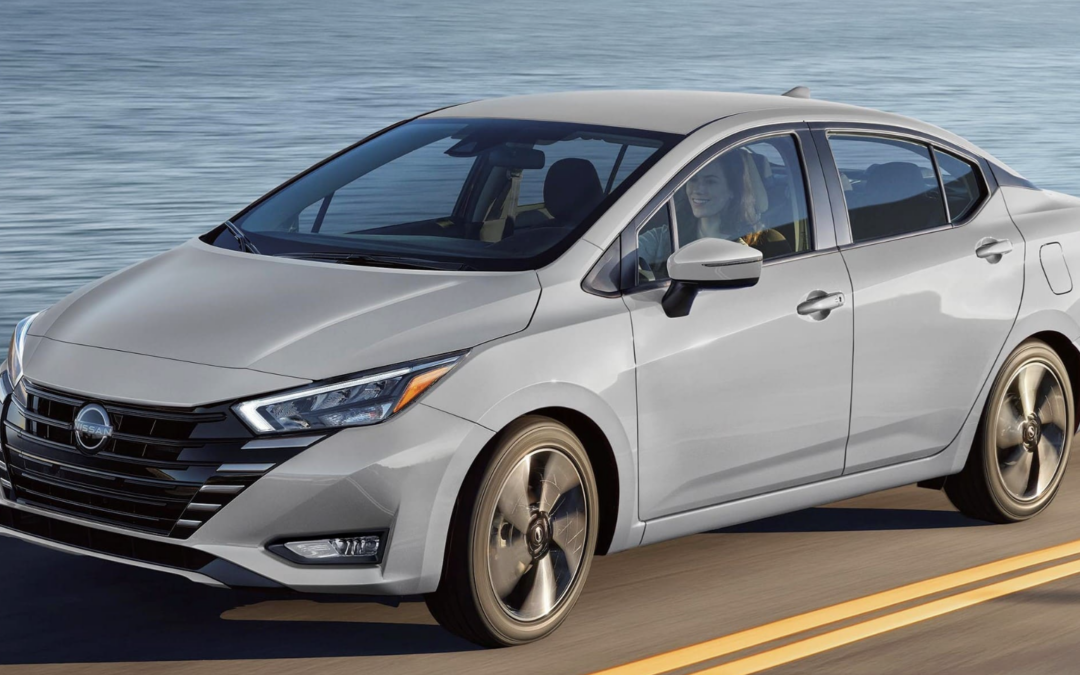
In 2024, it’s tough finding a cheap new car. Just a decade ago, buying a new car for $30,000 was the norm. Fast forward to today, and the average price has skyrocketed by 60%, sitting at about $47,000. Despite this surge, there’s still hope for budget-conscious buyers. Below, we’ve compiled all you need to know about the three cheapest new cars on sale in 2024.
Starting Price: $17,820 with destination charges
Fully-Loaded Price: $24,000+
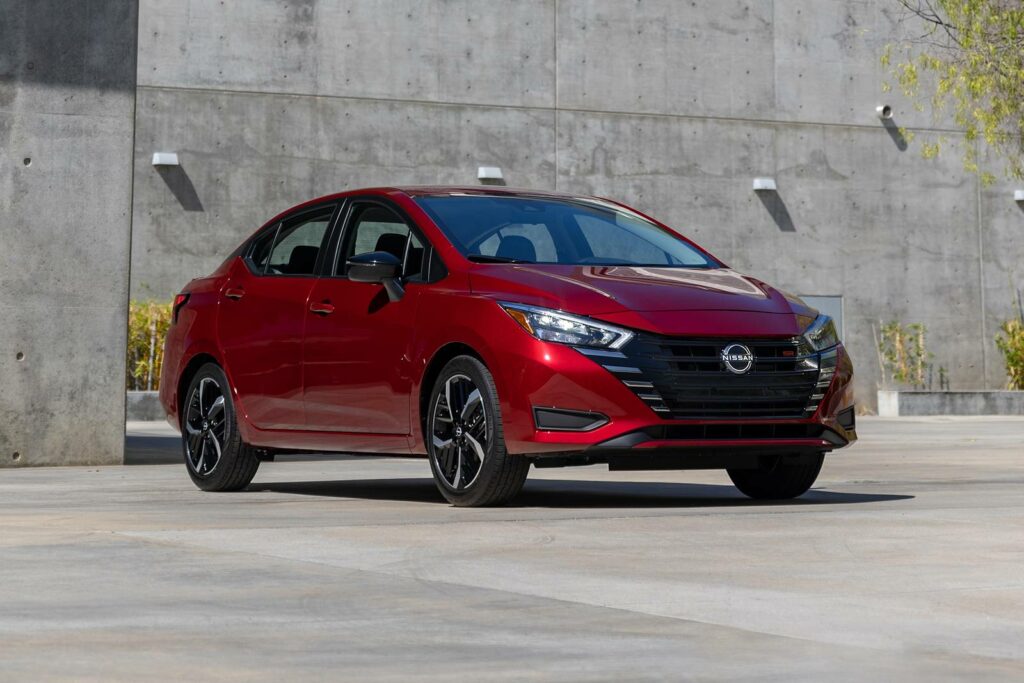
For those searching for the cheapest new cars in 2024, the Nissan Versa stands out as a prime candidate with a starting price of only $17,820 with Nissan’s expensive destination charges included. The Versa boasts a 5-star safety rating and an impressive 35 MPG, making it not only economical but also safe and efficient. Plus, the Versa is all-around better rated than the #2 cheapest car in America, the Mitsubishi Mirage (starting at $17,450).
See Nissan Versa listings with the power of local market data
Starting Price: $18,015 with destination charges
Fully-Loaded Price: $20,215+

The 2024 Mitsubishi Mirage is one of the last subcompact hatchbacks available, with a starting price under $20,000. It offers a lengthy list of standard features, including automatic climate control, a forward collision warning system, and a touchscreen infotainment system with Apple CarPlay and Android Auto. However, the Mirage’s slow performance, lack of comfort, and cheap interior won’t brighten your day. The slightly cheaper Nissan Versa is all-around a better option.
See Mitsubishi Mirage listings with the power of local market data
Starting Price: $21,275 with destination charges
Fully-Loaded Price: $24,525+
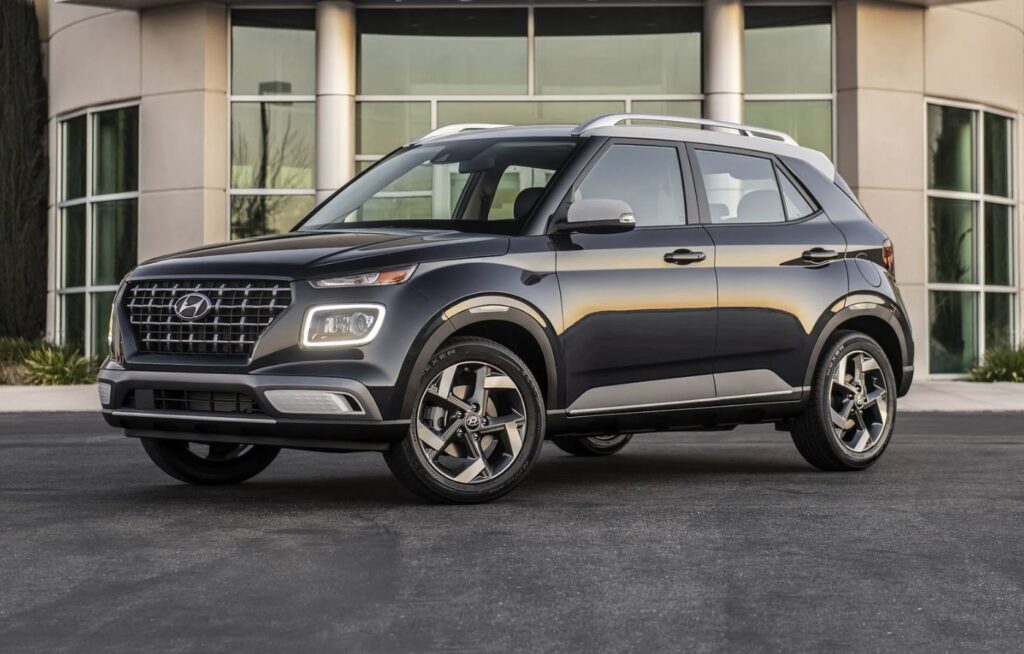
The 2024 Hyundai Venue might be the last new SUV with an MSRP under $20,000, but even the required delivery fees push it over the top. At a starting price of $21,275 with delivery, this is the cheapest crossover on sale. The cargo volume of the Hyundai Venue is just 32 cubic feet with the back seats folded, which is less than half of what you get with the larger Hyundai Tucson and Santa Fe.
Although the Hyundai Venue is technically the most affordable crossover, the only true SUV benefits you get are a rear hatch instead of a trunk and a higher ceiling for hauling.
Fuel economy is merely okay at 29 city / 33 highway, and NHTSA safety ratings are average at 4-stars overall.
See Hyundai Venue listings with the power of local market data
Finding the cheapest cars in 2024 may seem like a daunting task given the rising prices in the auto market. However, with options like the Mitsubishi Mirage, Nissan Versa, and Hyundai Venue, budget-friendly cars are still within reach. These vehicles not only offer affordability but also provide efficiency, safety, and value for their price.

Ready to outsmart the dealerships? Download your 100% free car buying cheat sheets today. From negotiating a deal to leasing a car the smart way, it’s all available for instant download. Get your cheat sheets today!

The best new car deals are changing in 2023. Our team of CarEdge Coaches combines decades of experience in the automotive industry to help you, the consumer, buy a car without the hassle. That’s why we create must-have resources that demystify car buying, and save you money. We surveyed our auto experts to find out which new cars have negotiable prices in 2023. The result is an up-to-date resource that will guide you through how to negotiate car prices in today’s changing market.
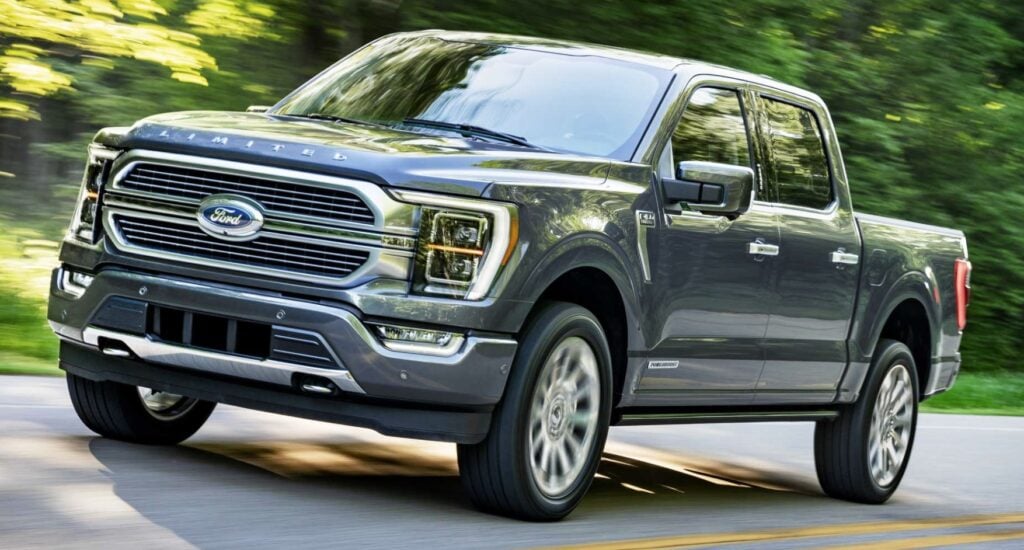
CarEdge Coaches Justise, Mario and Phil all highlighted full-sized trucks as particularly negotiable in 2023. It’s now common to see advertised discounts below MSRP for these models:
Mario noted that his data even shows the Toyota Tacoma TRD becoming negotiable in recent months, with some buyers he’s helped driving one home for between $1,500 and $2,000 below MSRP.
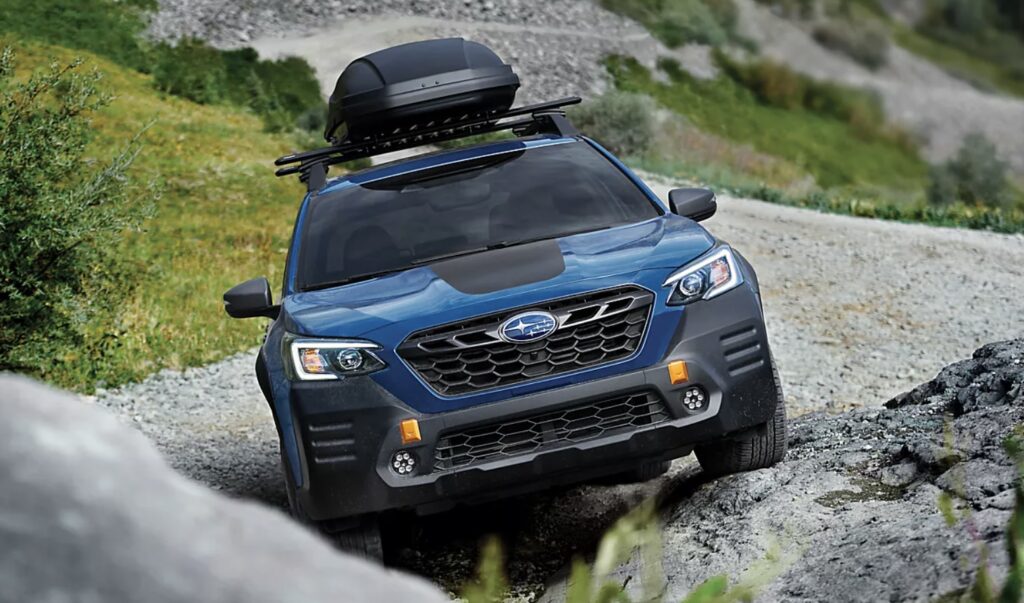
A year ago, could you imagine buying a brand-new Subaru WRX for $3,500 off of MSRP? In 2023, that’s exactly what CarEdge Coach Mario has been able to help at least one Subaru lover achieve. Subaru suffered the worst of the inventory woes in late 2021 and the first half of 2022, but things are looking up. As Subaru dealer lots fill back up, it’s becoming a buyer’s market again.
CarEdge Coach Justise says that new Subarus can be negotiated to the invoice price at the very least, with many deals closing for under MSRP.
Use this free cheat sheet to guide you through negotiating car prices, or work with a 1:1 coach for guaranteed success.
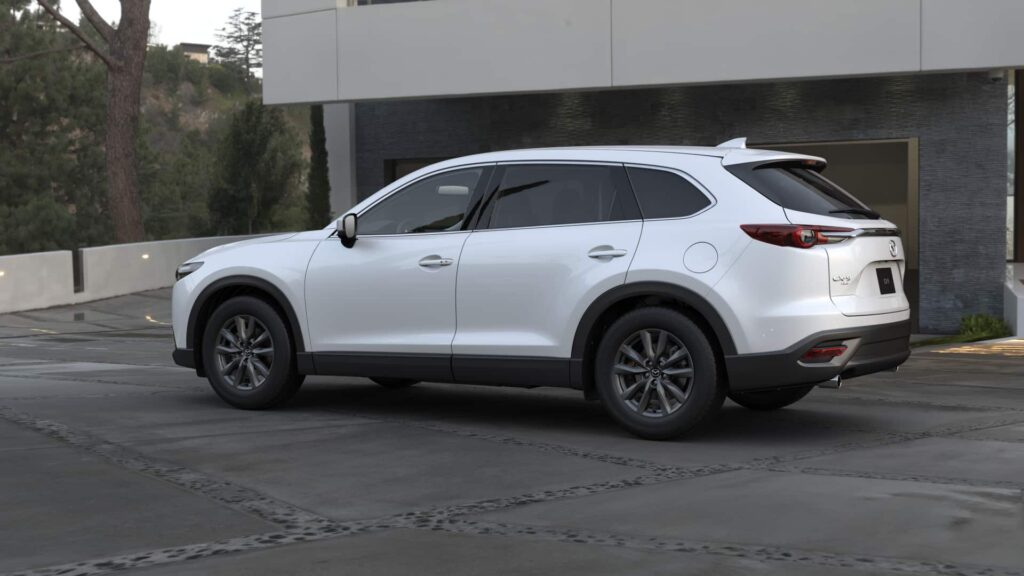
Mazda inventory is finally recovering, and that’s great news for car buyers. “Now we are refilling inventory and performance is up,” a Mazda executive told Automotive News recently. After treating its first EV like a joke with about 100 miles of range and slow charging, Mazda will “beef up” its EV goals slightly with a new plan. A dedicated battery-electric platform is now due to arrive in 2025.
In the meantime, you can score great deals on many Mazda models, depending on your local inventory.
CarEdge Coach Mario shared specific recommendations on how negotiable the most popular Mazda models are heading into spring:
CarEdge Coaches note that these models all have particularly negotiable car prices, especially when you approach the deal with confidence and market knowledge. Find out more about how you can work with a coach to negotiate the best deal on your next vehicle.
If you’re determined to get a good deal on any of these new cars, we HIGHLY recommend working with a professional, experienced car buying coach. These are the toughest vehicles to negotiate, and why.w
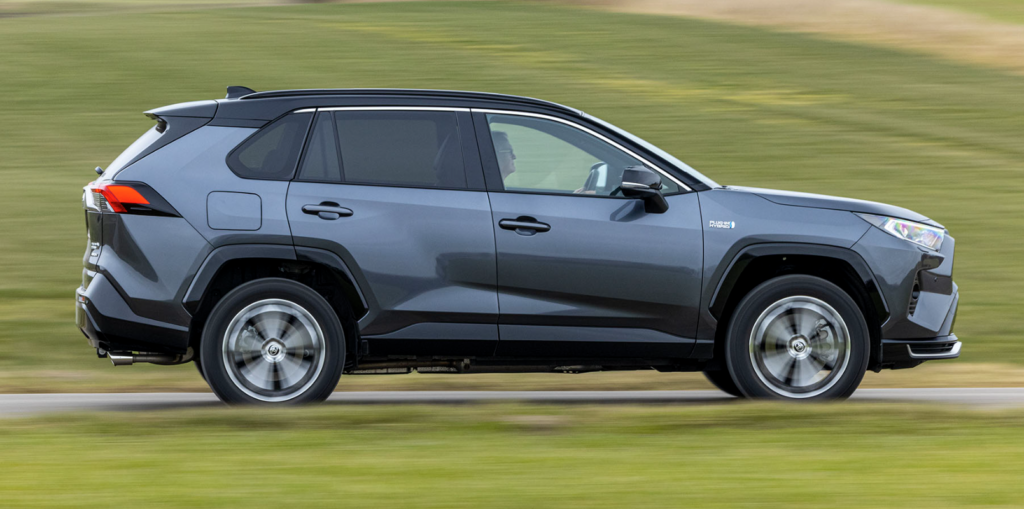
Gas prices have fallen, but we all know the drill. Eventually, gas prices will rise again. Besides, it’s not like the national average is cheap by any means, so higher MPG means more money staying in your bank account. Hybrid vehicles remain in high demand, and that’s being reflected in notoriously non-negotiable prices in 2023.
If you’ve tried to get a deal on a Toyota RAV4 prime or Honda CR-V Hybrid, you’re familiar with the challenge.
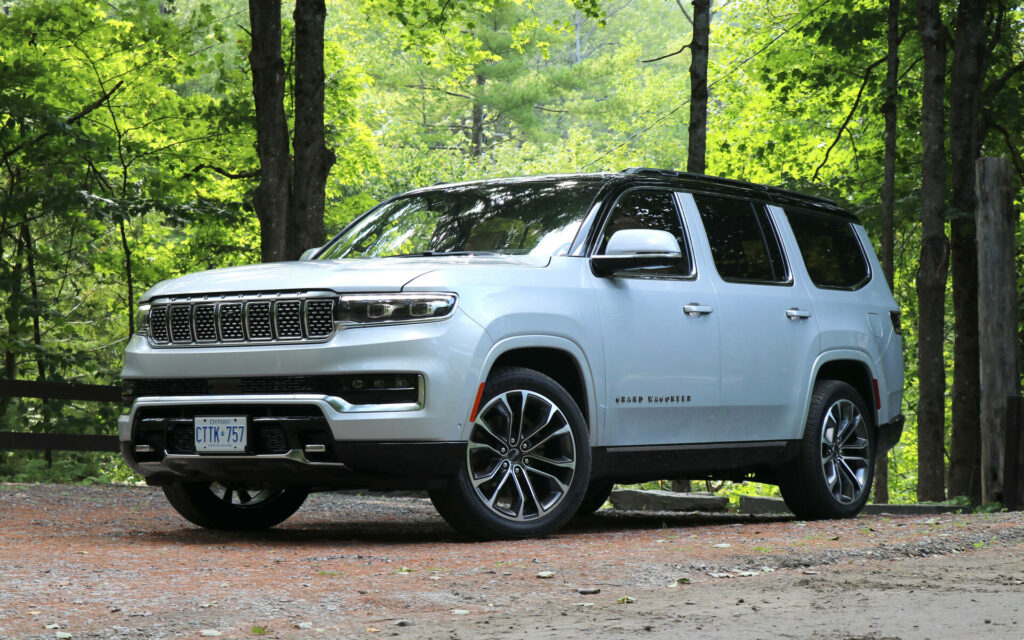
If you’re in the market for a new full-sized SUV, don’t expect to find good deals in the first half of 2023. Justise, a beloved CarEdge Coach who has saved hundreds of car buyers tens of thousands of dollars, says that he’s noticed that these models are particularly tough to negotiate, at least on the new car market:
Oddly enough, large SUVs have been among the vehicle classes that have declined significantly in the USED car market. If you’re in need of a larger SUV or van, we recommend at least taking a look at the pre-owned lots. Of course, never buy used without a pre-purchase inspection.
When you’re budgeting for a new car purchase, don’t forget the other significant costs that accompany vehicle ownership. Here are some helpful resources to shed light on the total cost of ownership:
See all of our 100% free guides and rankings.
Whether you’re thinking of buying new or used, always know the right price to pay. This is more important than ever as the market continues to change at a quicker pace. At CarEdge, we know that the best deal is the one you completely understand. Research is key to learning how to negotiate car prices effectively, and ultimately buying your car for the price you want.
The CarEdge Community is your one-stop shop for car buying advice and consumer empowerment. Join CarEdge for free to see what the hype is all about. Looking for more help with your deal? With the CarEdge Coach plan, you get 1:1 help from CarEdge Coaches, access to Premium Resources (like car dealer tools typically hidden from public view), Deal School, and CarEdge Reports featuring suggested offer, negotiation score, and recommendations for EVERY vehicle listing.
We’re real people helping drivers save real money every day. We hope to see you there.

For the past few years, electric vehicles have sold for about $10,000 more than combustion-powered counterparts on average. That’s not good for the consumer, and it’s not helping EV adoption. However, the market is changing. In 2024, you CAN negotiate electric car prices, at least for some of the most popular models. Here’s where the market stands, and how to negotiate a better price when you head to the dealership to buy your next EV.
The EV supply shortage is well behind us, and the legacy automakers are busy playing catch-up. It’s not all about Tesla anymore. Mainstream automakers like GM, Ford, Toyota and Honda are introducing their own budget-minded EVs in 2024 and 2025. On top of that, EV tax credits were revamped to remove the previous sales cap, and introducing new limitations.
Demand for electric vehicles remains high, and more than two-thirds of American drivers are at least somewhat interested in owning an EV in the future. What’s changing is the supply of new and used EVs on the market.
Little by little, electric vehicles are becoming a mainstay on dealer lots. Five years ago, Tesla, Chevrolet and Nissan were the few known for their electric offerings. Today, every automaker has jumped on the electric bandwagon.
Electric car prices remain higher than the overall industry average. The average new EV sold for $56,648 in 2024. That’s over $8,000 more than the overall average new car price of $48,401. This is an improvement over where EV prices were about two years ago when the average transaction price was about $64,000.
So yes, electric cars, SUVs and trucks remain expensive overall. However, for the determined and knowledgeable buyer, savings can be had when negotiating EV prices. Let’s dig into the details.
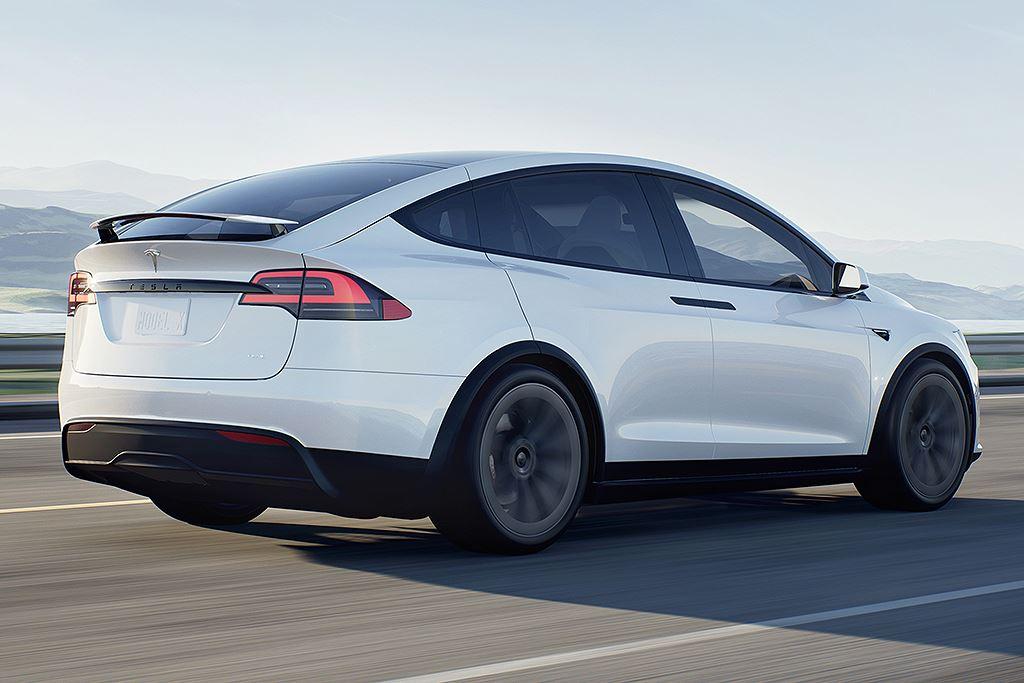
Are you shopping new or used? You can’t negotiate prices for a new Tesla Model Y or any other new Tesla. That’s because Tesla sells direct-to-consumer (learn more about the trend toward DTC sales here). The price you see on tesla.com is the price you pay.
Buying a used Tesla is an entirely different story.
Tesla commands about half of the EV market in America. So when Tesla discounts new models, the effects will spread throughout the new AND used EV markets soon after. In 2023 and 2024, Tesla discounted prices for the Model 3 and Model Y heavily. Why did Tesla drop prices? The answer is simple: to spur interest in its vehicles.
The result is much more affordable NEW Tesla models, and a glut of used Tesla cars on the market. Fewer buyers are opting to buy used at a time when brand-new Tesla models are heavily discounted. Consequently, the market for used Tesla EVs has crashed. You can most definitely negotiate a better deal on a used Tesla today.
Long gone are the days of used Teslas selling for more than new ones.
Before heading to the dealership to negotiate a used Tesla, prepare for the messy market in 2024. Here’s what you need to keep in mind when pursuing a deal on a used Tesla:
Several factors make all EVs more negotiable in 2024, not just used Teslas:
After what we’ve all been through a few years ago, it’s fair to be weary of good news. But deals on EVs are attainable. Zero percent financing abounds! Here are three recent EV success stories from the CarEdge community.
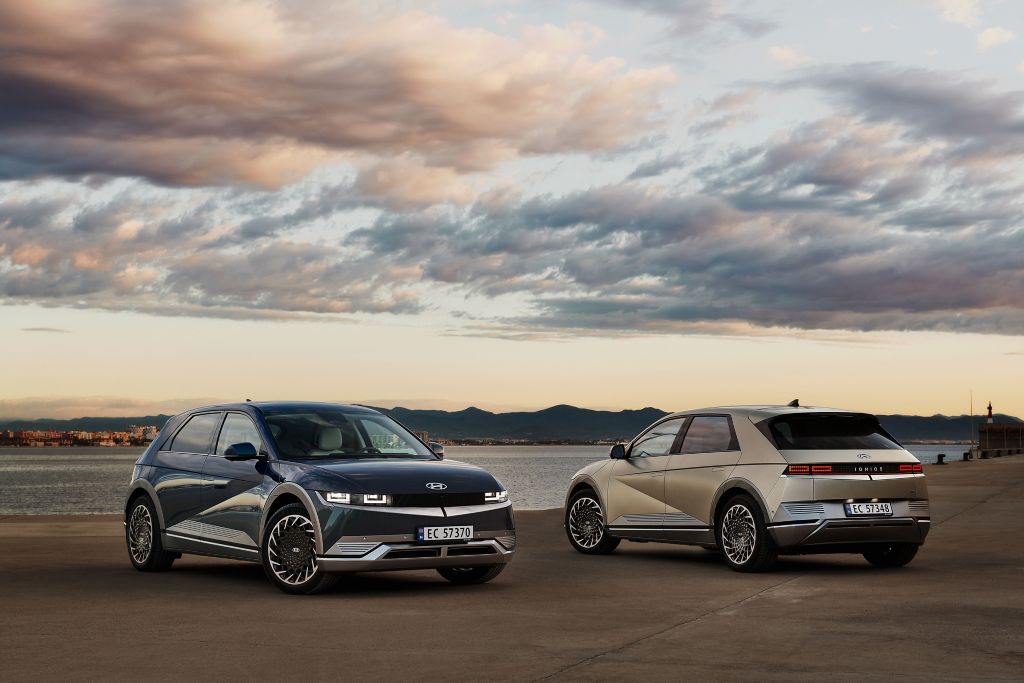
“Thanks to the guidance from CarEdge, I was able to get a 23′ Ioniq 5. I negotiated all of the dealer extras off of the out-the-door price and $4,000 off of the market adjustment. Could’ve gotten the SEL trim for under MSRP, but had my heart set on the Limited.
Really happy with CarEdge, it made all the difference. Hated to pay any market adjustment but the Limited trims are in pretty high demand with limited inventory so I felt good about it. Thanks crew!!”
– Eric, 2023 Hyundai IONIQ 5 Limited
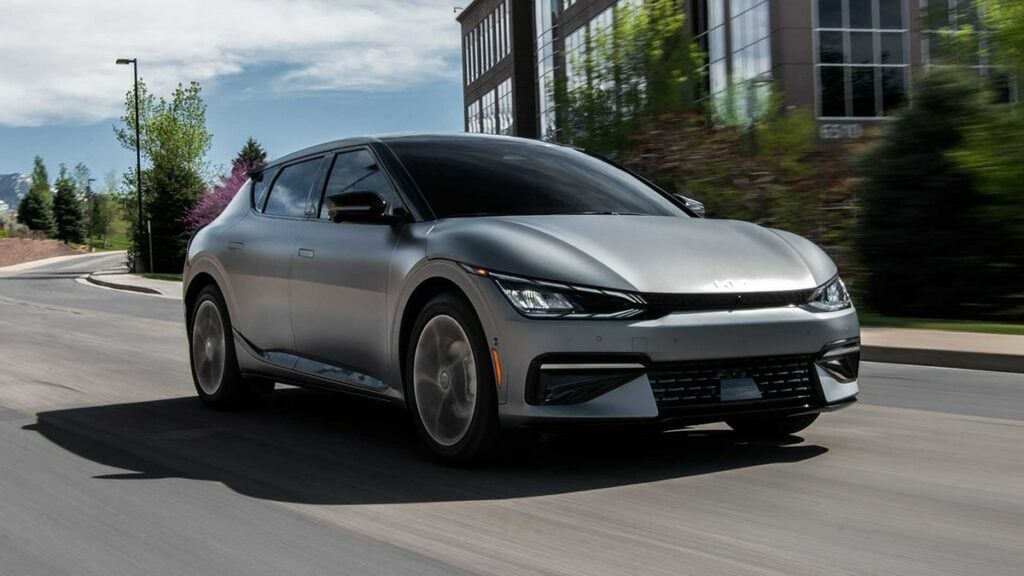
“I purchased a new Kia EV6 from Sterling Kia in Lafayette, LA. I emailed the dealer the evening of 10/21 after hours inquiring if they had a Wind RWD available. Matthew called me the next morning stating the car was available. Before the end of the day, I purchased the EV6 at MSRP with no dealer add ons.”
– Howard, 2023 Kia EV6
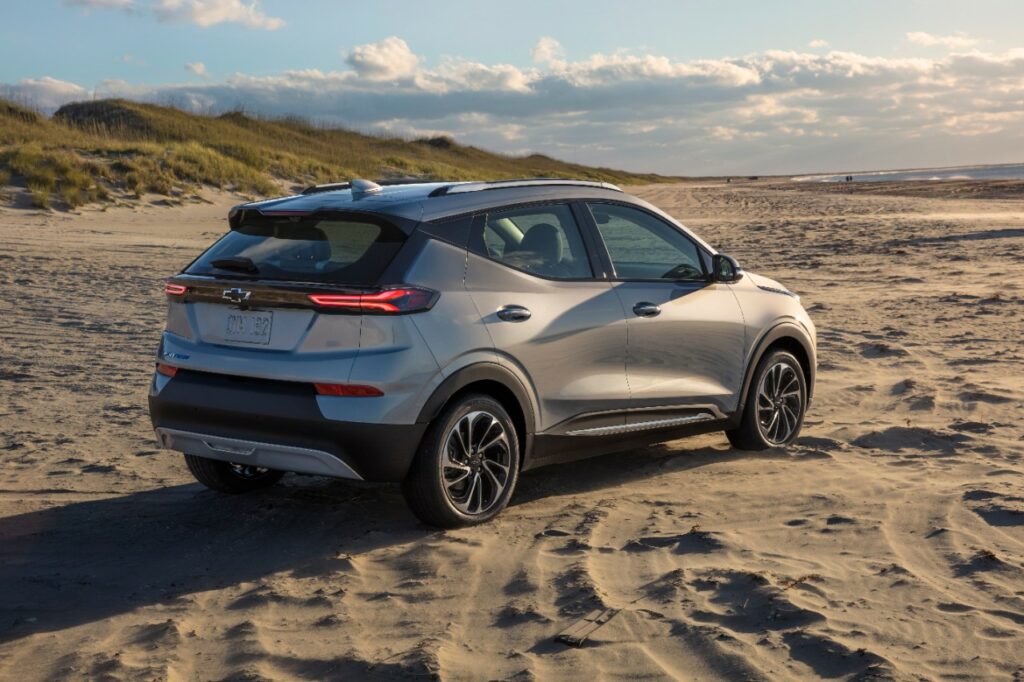
“I called a dealer about a Chevy Bolt 2LT, that according to CarEdge’s VIN tracker has been on the lot for 3 weeks 🤯. Salesperson said no markup, $2500 in add-ons, but they said it was negotiable.
I came in and negotiated off all the options except for permaplate. They even gave me the California Clean Fuel rebate, which I wasn’t expecting since California said they paused that rebate.
I learned so much from the CarEdge Community. I came with a check-ready loan. They beat my APR by .1% 👍. I told them I would rather custom order without accessories, they said they would but I would have to wait. When I said I would wait, the manager took off that last option.”
– Stefan, 2022 Chevrolet Bolt
There are many more examples of great car price negotiation wins over at the CarEdge Community. Today, it’s totally possible to negotiate the price of a new or used EV, especially if you’re willing to learn negotiation tactics that are proven to be effective.
Check out this 100% FREE car buying cheat sheet. You’ll know exactly what to say at the dealership to keep your best interests front and center.
Love free stuff? We do too. Search through hundreds of free car buying guides, and don’t forget to check out our help and market update videos on YouTube.
Used car sales are much stronger than they were one year ago. Car buyers aren’t phased by much higher interest rates, economic uncertainty or exorbitant new car prices. What do healthy sales mean for car buyers in the 2023 spring car buying season? Will used car inventory keep up with demand, or will a shortage send prices higher? Here’s what the latest data tells us.
Are you in the market for a new or used car? Expert coaching could save you thousands when you negotiate a better deal. Sound too good to be true? Check out dozens of success stories. Save 30% on CarEdge Coach for a limited time.
Is there a car shortage in 2023? It depends what you’re in the market for. Semiconductors aren’t the problem this time around. Car prices were so high for so long that as prices finally dropped, demand shot through the roof. The supply of used vehicles is lean as the spring selling season seems to be kicking off early this year, according to new data from Cox Automotive.
At the end of January 2023, there were 2.21 million used cars for sale on dealer lots across America. That’s 100,000 less than inventory in December 2022. Inventory remains down 14% from one year prior.
People keep buying cars, and that’s reflected in how quickly days’ supply has dropped. At the end of January, the days’ supply of used cars was 48 days, down from 57 just one month prior. Analysts from Cox Automotive note that many dealers are scrambling for inventory, and that’s driving up prices at wholesale auctions.
The average price for a used car in America is $26,510 in 2023. Here’s some perspective: Used car prices have risen 33% in the past five years. A decade ago, the average used car sold for ‘just’ $15,900. If you’re in the market for a used car under $15,000, expect VERY stiff competition, and slim pickings. Here’s how days’ supply breaks down for different used car price points, according to the latest data.
| Vehicle Price | Days' Supply |
|---|---|
| under $10,000 | 35 |
| $10,000 - $15,000 | 42 |
| $15,000 - $20,000 | 46 |
| $20,000 - $35,000 | 50 |
| over $35,000 | 53 |
The brands with the lowest used inventory were Toyota, Acura, Honda, Nissan, Mazda and Lexus. Toyota had the lowest days’ supply of used vehicles at 39. Japanese automakers have been hit particularly hard by post-COVID supply chain problems, which has forced more drivers to their respective pre-owned markets as new inventory remains slim.
After reaching a peak in June of 2022, used car prices steadily fell for seven consecutive months. That general trend continued into 2023, but reversed sharply beginning in late January. Not surprisingly, lower prices spurred higher demand for used cars.
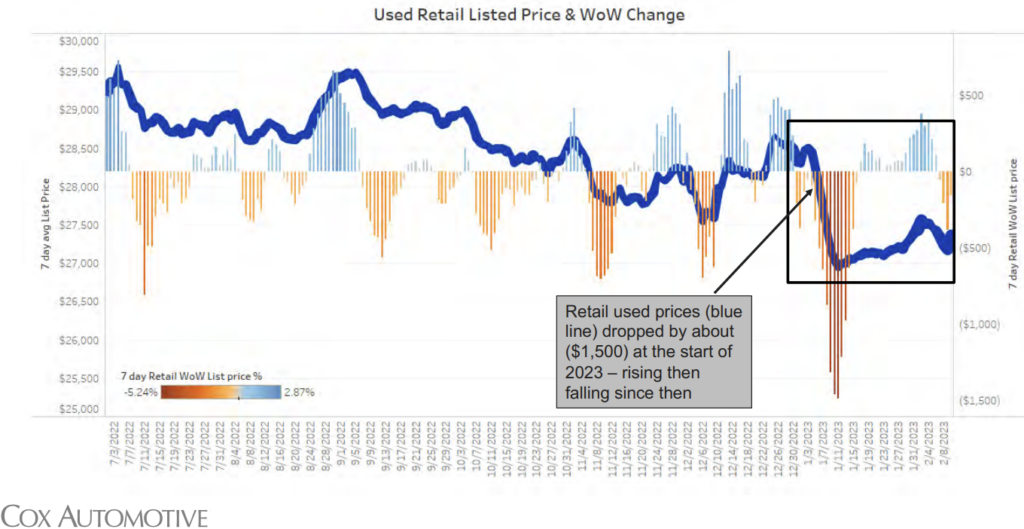
In a classic example of supply and demand economics, the used car market has reached a new normal in 2023. The volume of used car sales is 13% higher than it was at this point last year. Used car inventory industry-wide is now lower than at any point in all of 2022.
Wholesale auctions signal a sustained bump in prices, at least through tax refund buying season. Here’s a look at the latest Black Book wholesale auction price trends in March:
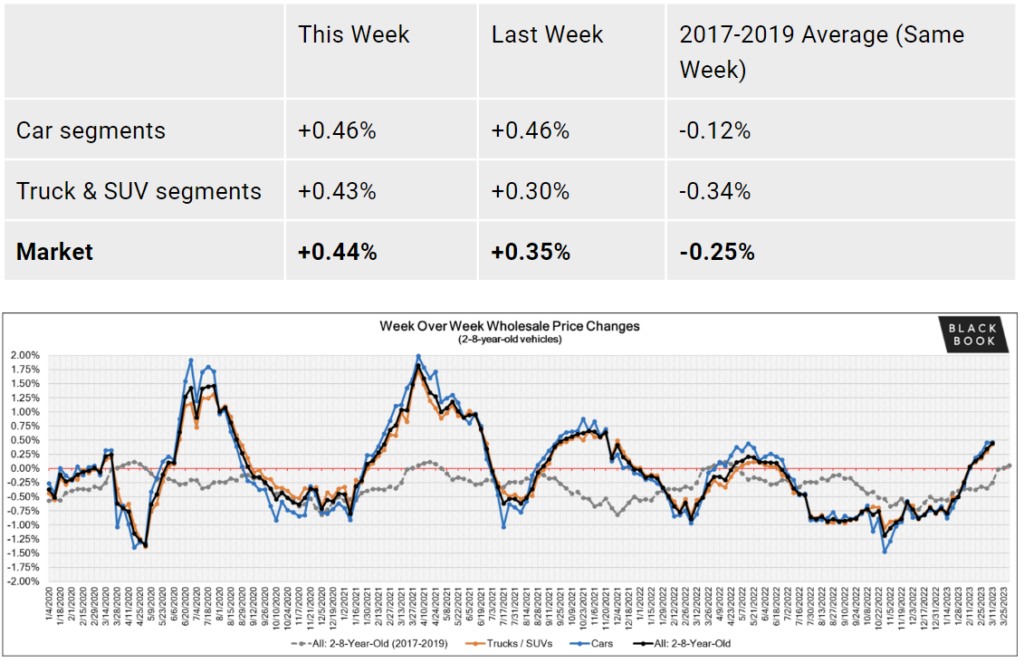
For the past two weeks, wholesale used car prices have increased. Sports cars and crossover SUVs have gained value the quickest.
As usual, there’s a 2-4 week delay between auction price trends and retail prices. As of February 21, the market average of retail used car prices remained unchanged.
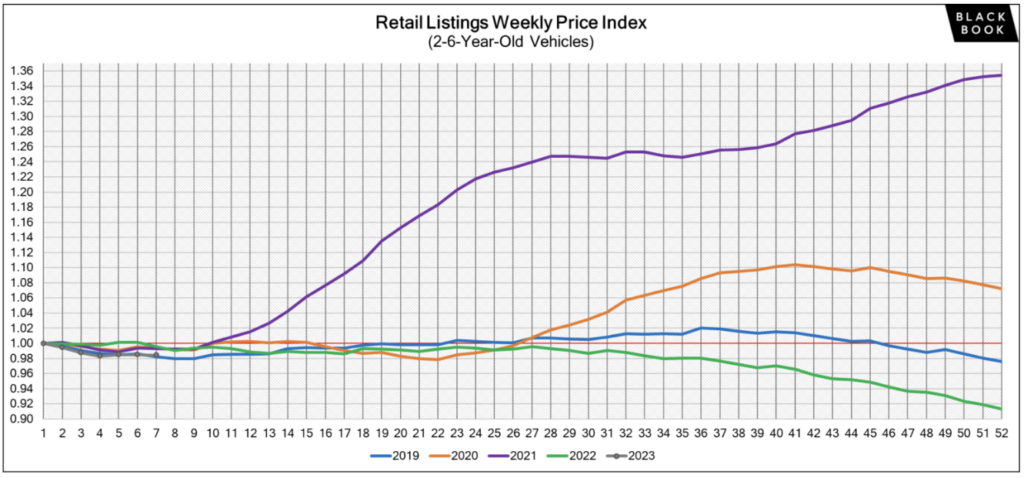
The sudden spike in used car prices won’t last, but don’t expect 2020 prices to return. CareEdge’s own Ray Shefska had these market insights to share.
“I expect to see used car values and asking prices to remain somewhat elevated throughout the spring months of March, April and May with prices beginning to decline in June. I suspect that even though wholesale values at the auctions will continue to rise, retail asking prices will probably remain somewhat flat in order to keep the deal structure within the lending guidelines set by the banks.”
Here’s what Cox Automotive Chief Economist Jonathan Smoke had to say about where things stand, and what’s to come.
“The principal reason for improving used retail sales early in 2023 is the price decline that was a product of last fall’s wholesale price drops. Now dealers are restocking at higher prices, and driving prices even higher, so the retail price trend will reverse soon. It’ll be tough to maintain positive sales momentum with higher prices, especially as rates keep rising.”
There’s a lot of pent-up demand for affordable cars. Factor in inflation, and it becomes clear that prices are never going back to where they were in 2020 and prior.
But that doesn’t mean you can’t negotiate a better deal!
Imagine if you could have an experienced car buying coach help you negotiate and compare deals, saving you time and thousands of dollars. That’s exactly how we help car buyers negotiate better deals at CarEdge. Buying a car just got a whole lot easier.
With CarEdge Coach, you get:
The savings speak for themselves….
“The buying and selling tools allowed me to track what was happening in the market. Knowing the value of my trade with the price of used cars declining each week, resulted in a private sale of the old ride. Timing was perfect for stepping into my next ride.
Thank you Ray, Zach and the CarEdge team… you’ve saved me thousands.”
– Happy owner of a 2023 Chevrolet Bolt EV
“Utilizing the market data available through CarEdge, I was able to get a 2018 Lexus IS 350 F-Sport Sedan with 44k miles for $35,600 out the door. This was $5k less than the first quoted price. It took a week, but with patience, the info to support my offer from CarEdge, and standing firm on what I saw was a fair price, it worked. Thank you Zach & Ray!!! No way this happens without my CarEdge membership. Will definitely circle back to the concierge option when it is time to get the next car!”
– Happy owner of a 2018 Lexus IS 350
CarEdge success stories have a common theme: you can save thousands of dollars with CarEdge. If you’re not satisfied, we offer a 100% money back guarantee.
From exclusive savings on financing, insurance and car maintenance to 1:1 consultations with our Coaches, we’re reimagining vehicle ownership for the better. We have options to fit every budget.
Learn more about CarEdge Coach. We’re real people helping you save real money!